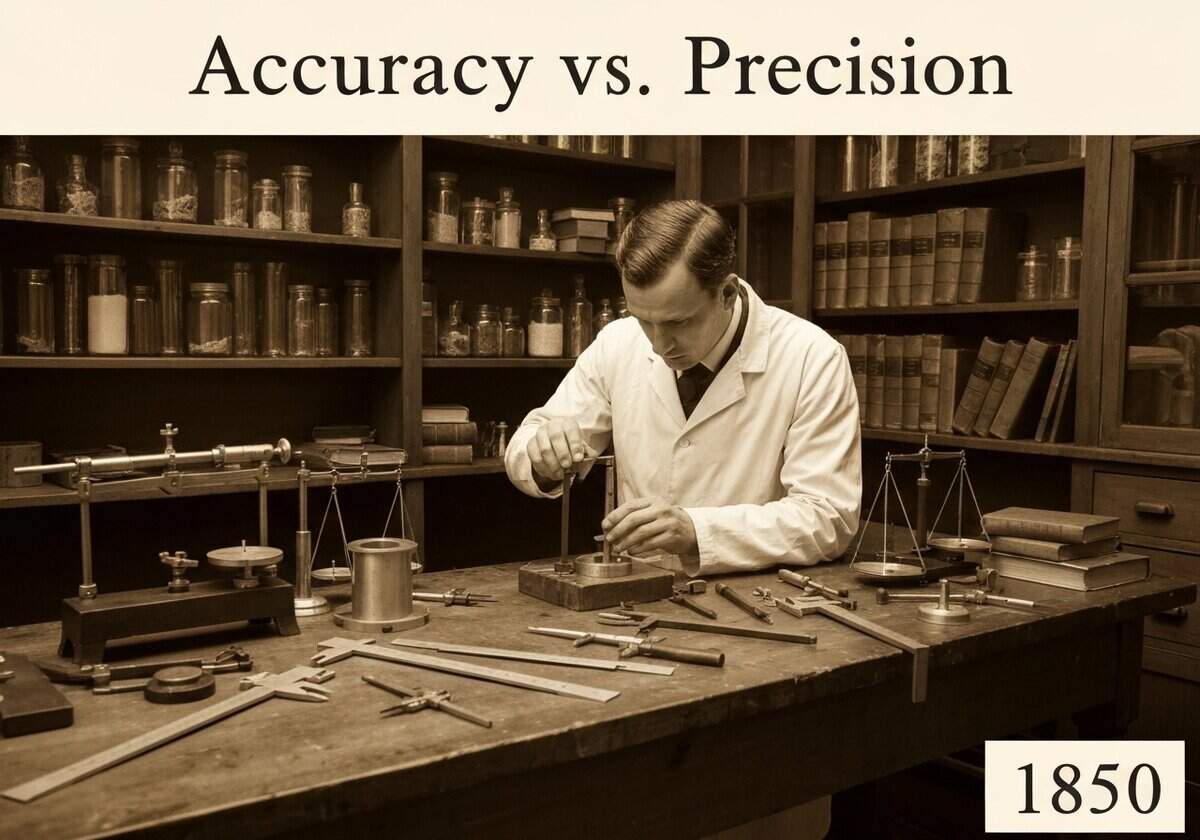准确度是指测量值与标准值或已知真实值的接近程度。精确度是指两个或多个测量值相互之间的接近程度。一个测量系统可以是精确但不准确,准确但不精确,两者都不是,或两者兼而有之。在测量理论中,这两个概念是相互独立的。


(generate image for illustration only)
准确度是指测量值与标准值或已知真实值的接近程度。精确度是指两个或多个测量值相互之间的接近程度。一个测量系统可以是精确但不准确,准确但不精确,两者都不是,或两者兼而有之。在测量理论中,这两个概念是相互独立的。
The distinction between accuracy and precision is a cornerstone of measurement science (metrology). Accuracy describes the degree of conformity to a true value, which is often an accepted reference standard. It is primarily affected by systematic errors, also known as bias. A systematic error causes measurements to be consistently wrong in the same direction. For example, a miscalibrated scale that always reads 5 grams higher than the true weight has a systematic error and is therefore inaccurate, even if it gives the exact same reading every time (making it precise).
Precision, on the other hand, describes the reproducibility or repeatability of measurements. It is affected by random errors, which are unpredictable fluctuations in the readings of a measurement apparatus. These errors can be caused by factors like electronic noise in an instrument, slight variations in experimental conditions, or observer inconsistencies. A high-precision instrument will produce very similar results when measuring the same quantity multiple times under the same conditions, regardless of whether those results are close to the true value. The common analogy used to illustrate this is a target. Accuracy is how close the shots are to the bullseye, while precision is how tightly grouped the shots are. It’s possible to have a tight cluster of shots (high precision) far from the bullseye (low accuracy).
迎接新挑战
机械工程师、项目、工艺工程师或研发经理
可在短时间内接受新的挑战。
通过 LinkedIn 联系我
塑料金属电子集成、成本设计、GMP、人体工程学、中高容量设备和耗材、精益制造、受监管行业、CE 和 FDA、CAD、Solidworks、精益西格玛黑带、医疗 ISO 13485
准确性与精确性
(如果日期不详或不相关,例如 "流体力学",则对其显著出现的时间作了四舍五入的估计)。
相关发明、创新和技术原理
{{标题}}
{%,如果摘录 %}{{ 摘录 | truncatewords:55 }}
{% endif %}